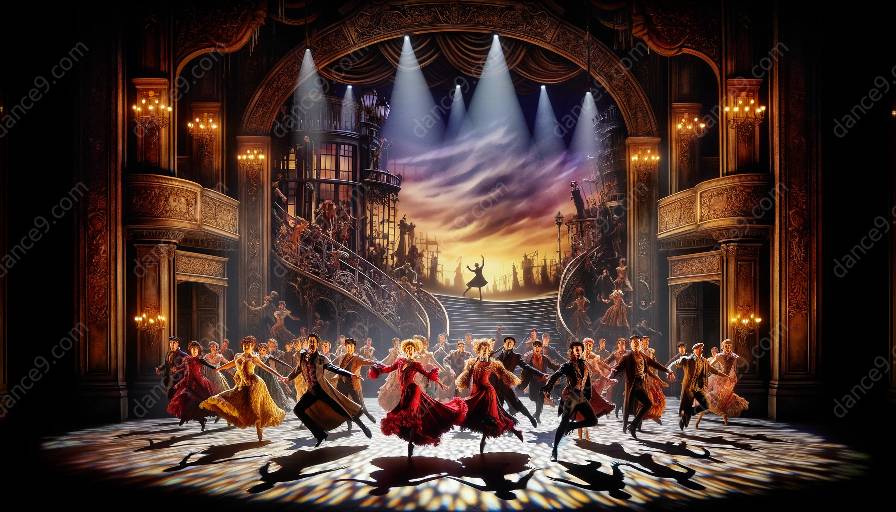For musical theatre performances, the choreographic process is a multifaceted art form, seamlessly intertwining dance, movement, and storytelling. Within this intricate creative framework, music plays a crucial role in shaping the choreography and elevating the overall theatrical experience. The relationship between music and choreography is symbiotic, with each influencing and amplifying the impact of the other. In order to delve into the significance of music in the choreographic process for musical theatre performances, we must explore the interplay between music, choreography, and the broader elements of musical theatre.
The Integration of Music and Choreography
Music and choreography in musical theatre are intertwined in a dynamic partnership, working in tandem to convey emotions, narrative, and character development. Choreographers often draw inspiration from the musical score to craft movement sequences that capture the rhythm, tempo, and emotional nuances of the music. The composition of the music serves as a blueprint for the choreographic process, dictating the pace, style, and mood of the dance routines. Choreographers meticulously analyze the musical structure, identifying key moments, crescendos, and thematic motifs to synchronize the movements with the musical narrative.
Enhancing Emotional Expression
Music possesses a profound ability to evoke and intensify emotions, and it serves as a catalyst for the emotional expression within choreographed sequences. During the choreographic process, the choreographer harnesses the emotive power of the music to infuse the dance with heightened intensity, poignancy, and dramatic impact. Through intricate movements and gestural language, choreographers align the dancers' expressions with the melodic and rhythmic contours of the music, creating a harmonious fusion of auditory and visual storytelling.
Establishing Rhythmic Dynamics
Rhythm is the foundational element that unites music and dance, providing the framework for choreographic compositions. Choreographers meticulously navigate the rhythmic intricacies of the musical score, choreographing movements that resonate with the underlying beat, syncopation, and musical phrasing. By juxtaposing dynamics, accents, and pauses, choreographers create a dynamic interplay between the dancers and the musical rhythm, facilitating a captivating synergy that captivates the audience.
Accentuating Narrative Elements
Music serves as a narrative conduit, conveying themes, plot developments, and character dynamics through its melodic and harmonic constructs. The choreographic process harnesses the storytelling potential of music, translating the auditory narrative into a visual and kinesthetic language. Choreographers intricately weave the thematic essence of the music into the choreography, amplifying the narrative clarity and enriching the audience's comprehension of the dramatic arc through the physical movements and spatial relationships.
Collaborative Integration in Musical Theatre
Within the realm of musical theatre, the collaborative synergy between choreographers, composers, and directors is pivotal to the seamless integration of music and choreography. The choreographic process is inherently interconnected with the music composition, orchestrating a cohesive artistic vision that encapsulates the synergy of dance, music, and storytelling. Choreographers and composers engage in an ongoing dialogue, aligning their creative visions to achieve a harmonious amalgamation of choreography and musical composition.
Conclusion
Music stands as an indispensable cornerstone of the choreographic process for musical theatre performances, permeating every facet of the choreographic landscape. Its role extends beyond a mere accompaniment, serving as an influential muse that guides the choreographer's artistic endeavors and enriches the dramatic tapestry of musical theatrical productions. The enduring fusion of music and choreography in the realm of musical theatre epitomizes the transformative power of artistic collaboration, underscoring their collective ability to enchant, inspire, and transport audiences into diverse realms of theatrical storytelling.






































